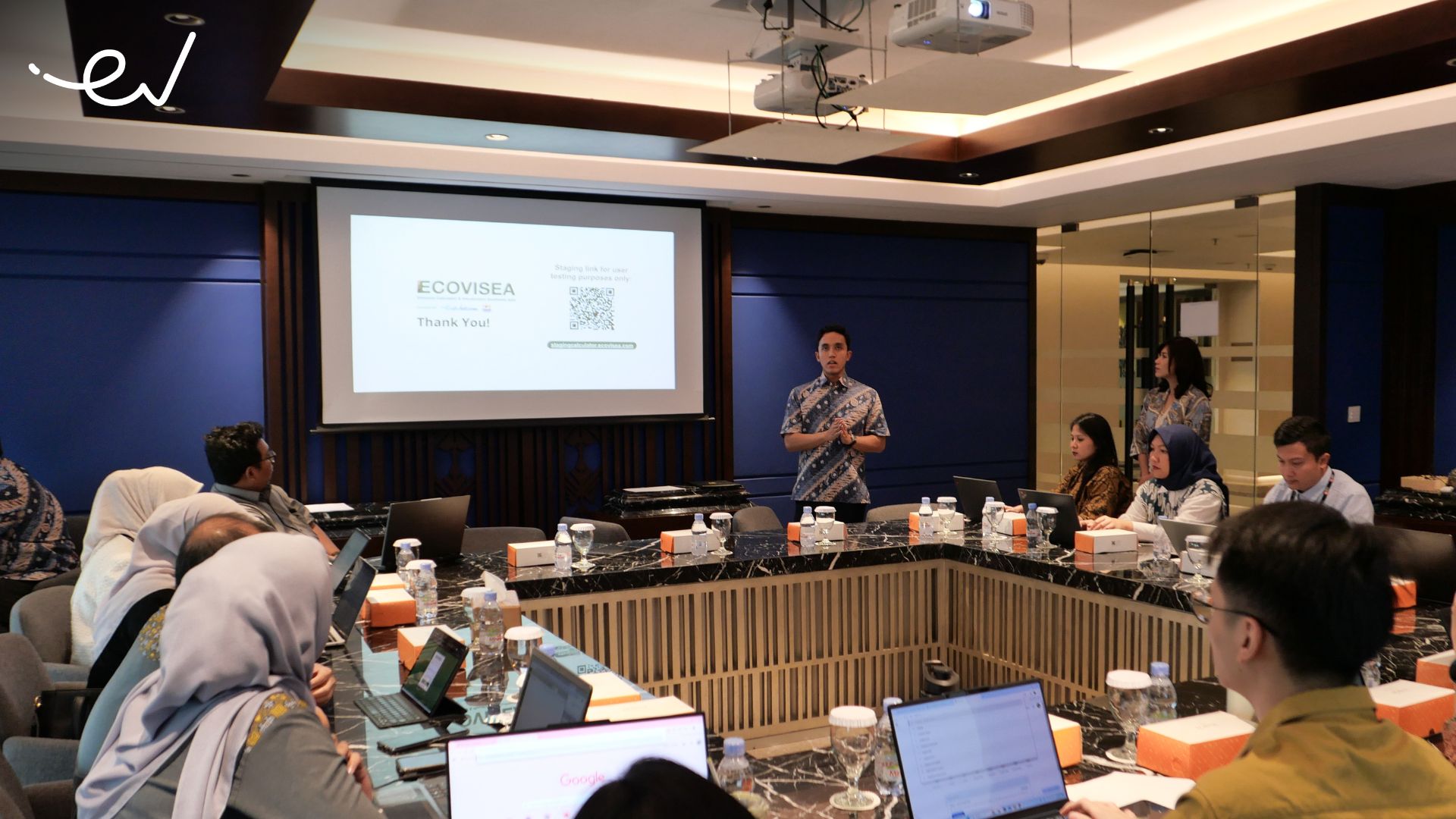After seeing an outstanding peak of M&A (Mergers & Acquisitions) performance in 2022—totaling 174 deals—the Southeast Asian M&A landscape fell down the slope for the second year. With only 99 transactions, the landscape reflected a 12% YoY (Year-on-Year) decline in 2024.
Nevertheless, there is optimism that the global M&A market will rebound in 2025. During these tough economic times in the past two years, the most resilient companies and entrepreneurs persevered, navigating downturns and shifts in the industry, and continued to scale.
At the recent East Ventures Summit 2025, we had the privilege of welcoming Christian Wolf, Head of Mergers & Acquisitions for Southeast Asia & India at UBS, and Thong Kai Shang, Co-head of Venture Capital Relationships and Venture Lending for Asia Pacific at J.P. Morgan, to discuss the region’s M&A landscape in the panel titled “Shaping the future of M&A in Southeast Asia,” moderated by Henry Lieviant, Co-Founder and CEO of Komunal.
The panel explored future M&As in the region, investors’ increasing appetite despite recent slowdowns, key sector trends including consumer and fintech, macroeconomic challenges, and not forgetting the importance of preparation for startups and firms alike.
Despite headwinds from global geopolitical uncertainties, Southeast Asia remains highly attractive to strategic and financial investors. Ultimately, founders are encouraged to maintain flexibility between IPO (Initial Public Offering) and M&A paths, and invest in strong governance and relationship-building.
With the right preparation and mindset, companies can position themselves to thrive and unlock long-term value, regardless of market conditions.
The transcript of the panel discussion below has been edited for clarity and brevity.
Hendry Lieviant: Good afternoon, everyone. I am Hendry Lieviant, Co-Founder and CEO of Komunal. I have the privilege of being your moderator for this session today.
M&A has been a hot topic, as it made up most of the exits for startups in this region. But in the past two years, we haven’t seen the volume that we would like to see.
Perhaps we can start by getting each of you to share your views and thoughts on the latest M&A trends—where we are and where we are heading?
Thong Kai Shang (TK): I would say that the overall long-term view for M&A in Southeast Asia tracks business performance and business prospects, which is to say it’s still very optimistic.
Now, I think a very big reason we haven’t seen as much M&A activity in recent years is twofold: one is overall global market conditions, and two is the narrative around Southeast Asian companies, tech, tech-enabled companies, and their performance over the past two years.
That doesn’t mean that the interest isn’t there. Strategics are just looking for the right set of companies, with the right financials, the right performance, and the right addition to their own portfolio and balance sheet.
If we look at the past few years, where the M&A activity and deals have been and where exits have been, generally, they have been to other Southeast Asian companies rather than global buyers, just by number.
For instance, Carousell bought LuxLexicon, Grab bought Jaya, Chope, Validus Singapore, etc. There have been a handful of exits to international buyers, such as TikTok buying Tokopedia, and Ant buying 2C2P, but those are fewer in nature and generally require more work and preparation.
Christian Wolf: I fully agree. In 2021, we had a record year for M&A in Southeast Asia because of, admittedly, the tech boom at the time.
We had all these things coming together, but since then, in 2022 and 2023, we saw a gradual—in some sectors, particularly tech, consumer, healthcare—slowdown in deal-making, because we saw supply chain issues, domestic consumption patterns. So those sectors were definitely slower.
We do see some interest in domestic, consumption-driven stocks coming back. Deals that play to the domestic consumption theme are more actively in demand.
Now, clearly, domestic consumption is not yet where we want it to be, not in Indonesia, not in Vietnam, not in Singapore, so there is still some room to grow. But I think, on a relative basis, the interest is definitely there. So I very much agree with what TK is saying.
The interest of particularly strategic have always been there, it’s just that they have the patience, I guess, to wait maybe a year or two, they don’t need to transact necessarily in any given year, you’ll have to bake that into your preparation schedule, which we’ll come back to later.
Hendry Lieviant: It’s great to see that interest is brewing, and we just need to be prepared for the right time. So, TK, significant portions of Southeast Asia’s M&A are done by foreign investors. Could you please share with us how foreign investors, from your experience, look at Southeast Asia as a target market or portfolio exits?
TK: It’s how any large strategic would look at making an investment anywhere in the world.
They are evaluating on the back end: “Where are the areas that I need to invest in, where are the countries that I am comfortable investing in—balancing that with the areas that I don’t necessarily have a presence—which is why I want to invest in it, what are the products I need?”
When you come down to specific opportunities: “How well do I know the team, how well do I know the market, what are the risks involved?”
And ultimately: “What’s the ROI?”
Because every company is constrained by something. Sometimes it’s capital, sometimes it’s labour, manpower, management time. So no company in the world can make investments in every market and every product that they want to, hence they have to prioritize.
So it comes down to their list of priorities, which the people in this room typically won’t know in too much detail. We might get a sense for public companies the way that they talk about their business in the annual report, in the CEO letter, and the chairman’s letter to understand the direction they’re heading.
But there will invariably be a list of internal priorities that they are benchmarking every investment opportunity against.
Christian Wolf: How do international investors look at the Southeast Asia markets? There are many ways you can segment that, but I would distinguish between the strategics and sponsors.
Now I think it’s right that for founders, you think about it as your main exit. But if you listen to your M&A bankers, we would always tell you to maximize optionality, you should try to target both financial investors.
But the reality is, thinking about it quite differently in the last two to three years. When they think about investment, financial sponsors always think about the exit.
Now when I talk to sponsors about investing into companies, they always ask me: “What is exit? I’m worried about liquidity, I’m worried about how can I monetize it?”
[They would also ask,] “Christian you’re telling me that sponsors are the main source of demand today, and if the IPO market is not available, who I’m going to sell this to in four to five years’ time?”
The liquidity of the IPO market is a concern for a lot of financial investors.
On the plus side, the financial investors are sitting on a lot of cash, so sometimes they just need to deploy. But you need to be mindful that liquidity is a serious concern for them.
It’s not about selling; it’s the main gripe. What we’re hearing is that there are not enough good quality control situations available.
They would always prefer control, so the fact that in Southeast Asia, the founders are hogging the controlling stakes and don’t want to sell control, is a real issue for them.
Hendry Lieviant: Southeast Asia comprises different nations, meaning it has different regulatory landscapes, operational hurdles, and cultures.
From your experience in Southeast Asia, what are other things that the founders or the investors need to consider, other than the global geopolitical risks?
TK: I would say in our experience, regulators around Southeast Asia have actually been generally very supportive.
They have realized over the past five to ten years that the tech ecosystem, the innovation economy, has been such an important driving force in economic growth as well as providing employment, providing jobs.
Now, of course, there are some constraints that need to be worked around. But if we look at, for instance, the speed at which the Indonesian government facilitated the path for some of the early tech listings a few years ago, that was very impressive and I don’t think many other countries may necessarily have done that outside of SEA.
In general, we look at a regulatory landscape as relatively stable, supportive, and when certain changes need to be made, not just in M&A but certain capital markets, allowing for perhaps some short selling for better liquidity, the governments and regulators have been quite open to the discussion.
Of course, things don’t change overnight, but it is the responsibility of the industry, of the bankers, of the founders to lobby and make that happen.
I don’t think that the regulations are an impediment to deal-making, but your other part of the question is, “What else do we see that can be potential obstacles?”
Firstly, there is still a perception that in general Southeast Asia, there is a bit of a gap between the valuation ask and bid, and secondly, the cap tables of some of the companies can be quite fragmented, which leads to challenging decision making.
Because, sometimes the founder may find it difficult to corral the rest of the cap table along. Sometimes, the cap table may have significantly different valuation marks, which makes it difficult to get everybody on the same page for a deal.
Hendry Lieviant: Chris, one of the worries of the founders sometimes when being approached for M&A is, “We might lose control, we do not know what to expect post M&A.” Would you perhaps give some view from your experience, what to expect, you know, as a founder, to be prepared for that?
Christian Wolf: Collaboration with new partners is something that is, I think, scary and big because it’s a major change, it’s a major milestone in your business.
What you can do is, get good advisers on board. You should also definitely talk to East Ventures or your partners as to how they just try to get as much dialogue and experience sharing as possible.
When we talked about the right bidder, TK mentioned, “Don’t limit yourself to two to three buyers.” The reality is that even if you have an ideal buyer in mind, it may not work out.
Just like in life, some relationships work out, others don’t. You need to practice and learn from mistakes. You may mitigate some of those issues or some of those concerns by having practiced it to some extent.
Do strategic collaborations with partners. When you do that, [they can be] potential buyers for you later on, but also that you develop a skill set and an appreciation of how partnerships work. And then your eventual sale is much more likely to be successful.
Hendry Lieviant: Perhaps one last question. For both of you, how would you advise founders who are willing to take the route of M&A in the next three to five years, how should they prepare themselves?
TK: I think for every founder, as you think about your path to exit, it should not be, “I want to go public,” or it should not be, “I want to do the M&A route exclusively.”
Yes there may be certain situations where there are more obvious M&A buyers than others, but I just think that, given the uncertainty around the markets, it’s very difficult to predict that in 2 years time, the M&A market is going to be the way to go, or the IPO market is going to be way to go because we just don’t know.
The prudent thing to do would be to prepare for both an IPO and an M&A, as potential paths to exit. Now, the good news is that a lot of the preparation work is quite similar. So on the previous panel, the panelists were talking about how to get your business ready, get the right management team, good governance, get credible shareholders on your cap table, all that also applies to an M&A situation.
Because when a buyer looks at your company, they also want to get confidence that it’s well-run, it’s disciplined, that you have very credible and supportive shareholders that have been shepherding you and helping you grow up with the right set of advice and support systems, and that puts you in good standing.
Second, as briefly touched on earlier, you do have to start the conversations early, as much as it is challenging or a little scary.
Sometimes the relationship has to go both ways. It does take time for you to get to know the right set of parties in the room, to build relationships with them. Use your bankers to help filter that, narrow it down to a handful of more core relationships that you want to maintain, and then put in a bit more effort over time to maintain the relationship.
Christian Wolf: It’s true that there are no trade-offs. For example, we talked about preparing for an IPO.
If you think about financial reporting system, IT, etc., it’s just a question of how much do you do it and how much resources do you put into that.
If that leads you to having very, very high SG&A (Selling, General, and Administrative) [expenses] that sucks your cash flow out of the business, that’s not great. The answer has to be somewhere in the middle; it’s definitely worth thinking about what the right balance is there.
If you think back 15–20 years, any company that has lived through the Asian financial crisis they would be skeptical of leverage. Because they say that, “I don’t know when the capital markets will be open, I don’t know what terms I can issue, debt or equity.”
Erring on the side of caution in terms of leverage, how much you’re willing to commit to go all out for growth is another key trade-off.
If you want to have a reliable exit and future, you need to be prepared for all seasons. You can’t just prepare for summer, you [also] need to have a successful ability to grow and sell the business even in the tougher times.
Hendry Lieviant: From your experience interacting with regional potential investors or global investors, are there any verticals that stand out the most or are the most attractive so far? I understand this can be seasonal, so perhaps what do you see lately—which industries or verticals are more attractive for regional or global investors?
TK: Consumer access, and that can be around consumer brands, consumer internet fintech, consumer-focused fintech.
Anything around software, around AI will also assuredly attract a lot of attention. It can be perceived as being more stable compared to consumer-facing businesses, and just a relative scarcity of such businesses in the region.
Christian Wolf: Consumer, healthcare services, on the digital side, fintech, digital infrastructure, these are all themes that are still very much in demand, and they’re doing well.






